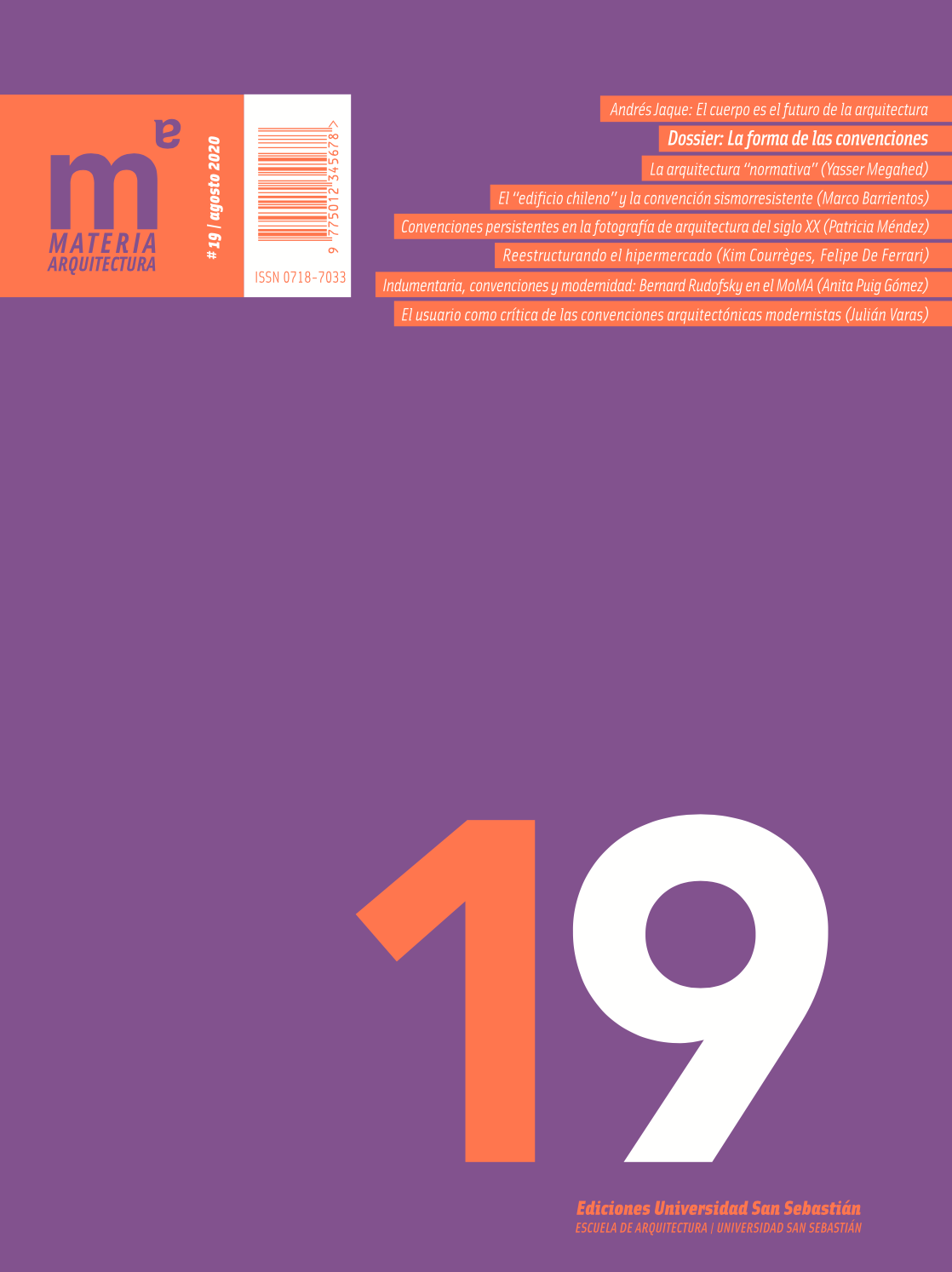Clothes, conventions and modernity. Rudofsky ?s exhibition at the MoMA
Article Sidebar
Keywords:
Main Article Content
Abstract
This article presents the debate on the formulation and the original proposals regarding Bernard Rudofsky s 1944 exhibition for the Museum of Modern Art of New York. Through the analysis of the original letters sent by the architect during the research and curatorship of the exhibition, the research history, and the objects that did not make it to the show, it is possible to conclude that the exhibition ends up conforming to the conventions that modern architecture posed, exactly those that Rudofsky aimed to criticize. The exhibition established a dialogue between clothes and rationalized body, that turned out critical specifically among the difficult times after the end of Second World War.
Article Details
Materia Arquitectura provides immediate and free access to all the content of this online edition, published simultaneously with the print edition.
Materia Arquitectura does not charge authors for any concept.
All contents of this electronic edition are distributed under the Creative Commons license of "Attribución-shareAlike 4.0 Internacional" (CC-BY-SA).
The rights of the published texts and images belong to their authors, who grant Materia Arquitectura the license for their use. The management of the permits and the authorization of the publication of the images (or of any material) that contains copyright and its consequent rights of reproduction in this publication is the sole responsibility of the authors of the articles.
As long as they mention their origin, the authors are free to distribute their articles by other means. Any total or partial reproduction of the material must mention its origin.
Downloads
References
Rudofsky. Are Clothes Modern?: General Correspondence. The Museum of Modern Art Exhibition Records, 269. 3. The Museum of Modern Art Archives, New York.
EDWARDS, L. (2018). How to Read a Dress: A Guide to Changing Fashion from the 16th to the 20th Century. Bloomsbury.
EVANS, C. (2013). The Mechanical Smile: Modernism and the First Fashion Shows in France and America, 1900-1929. Yale University Press.
GREEN, S. (2013). The Public Lives of Charlotte and Marie Stopes. Pickering & Chatto.
MARCUS, N. (1940). Are Clothes Modern?: Correspondence: Last Sections. The Museum of Modern Art Exhibition Records, 269. 6. The Museum of Modern Art Archives, New York.
MOMA. (1932). Modern Architecture. International Exhibition. Museum of Modern Art.
MOMA. (1944). Press Release. Tradition challenged in Museum of Modern art Exhibition, Are Clothes Modern? Retrieved from www.moma.org/documents/moma_press-release_325448.pdf
NIEMAN, M. (1940). Are Clothes Modern?: Correspondence: Last Sections Series Folder 269. 6. The Museum of Modern Art Archives, Nueva York.
RUDOFSKY, B. (1947). Are Clothes Modern? An Essay on Contemporary Apparel. Paul Theobald.
RUDOFSKY, B. (1986). The Unfashionable Human Body. Prentice Hall.
SCOTT, F. (1999). Underneath Aesthetics and Utility: The Untransposable Fetish of Bernard Rudofsky. Assemblage, (38), 59-89. https://doi.org/10.2307/3171248
WOMEN ?S BUREAU ? U.S. DEPARTMENT OF LABOR. (1941). Are Clothes Modern?: Correspondence: Last Sections. The Museum of Modern Art Exhibition Records, 269. 6. The Museum of Modern Art Archives, New York.
WOOD, M. (Ed.). (1989). We Wore What We’d Got: Women’s Clothes in World War II. Warwickshire Books.
Most read articles by the same author(s)
- Anita Puig Gómez, INDUMENTARIA, CONVENCIONES Y MODERNIDAD: BERNARD RUDOFSKY EN EL MOMA , Materia Arquitectura: No. 19 (2020): Materia Arquitectura 19 (Agosto/August 2020)
